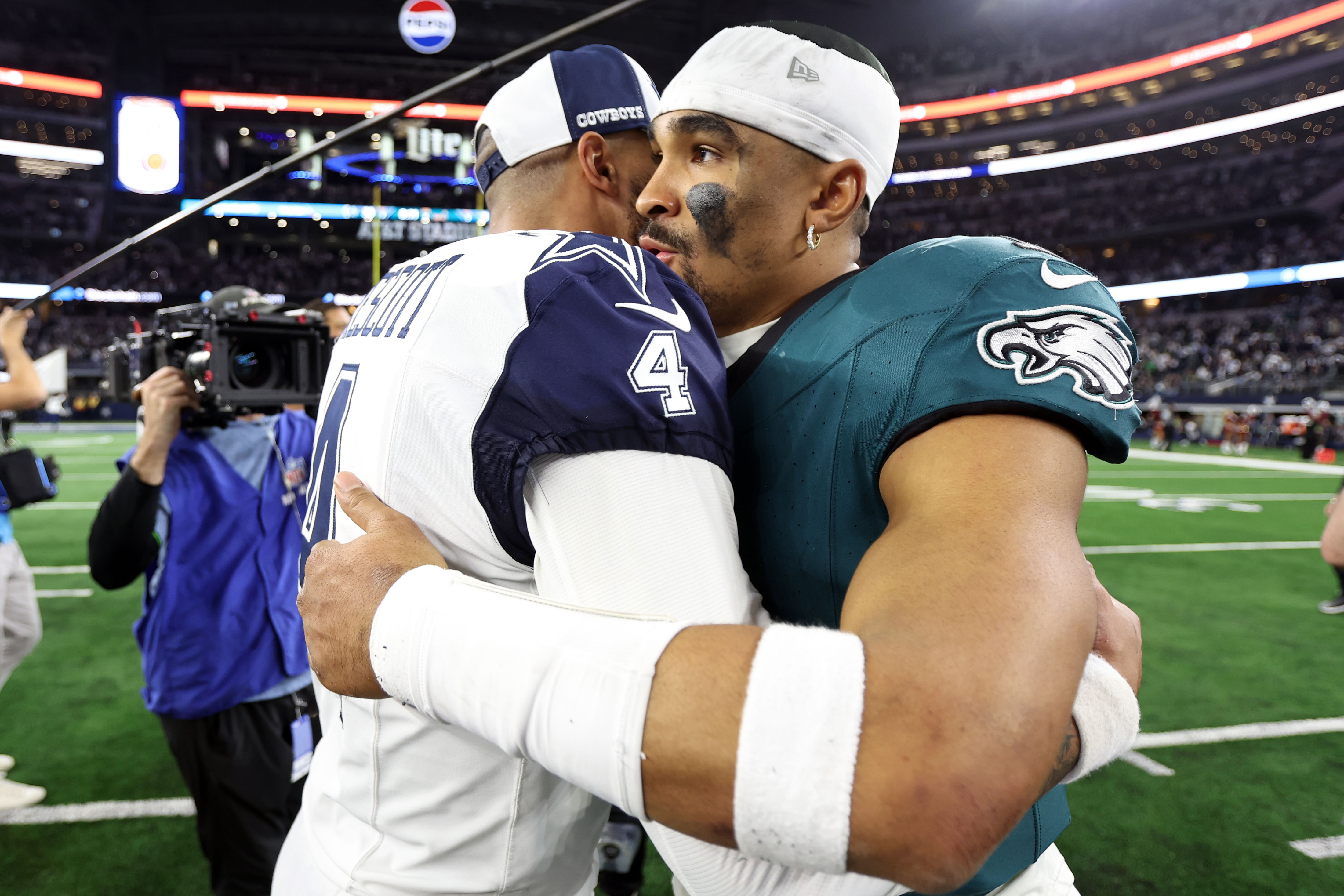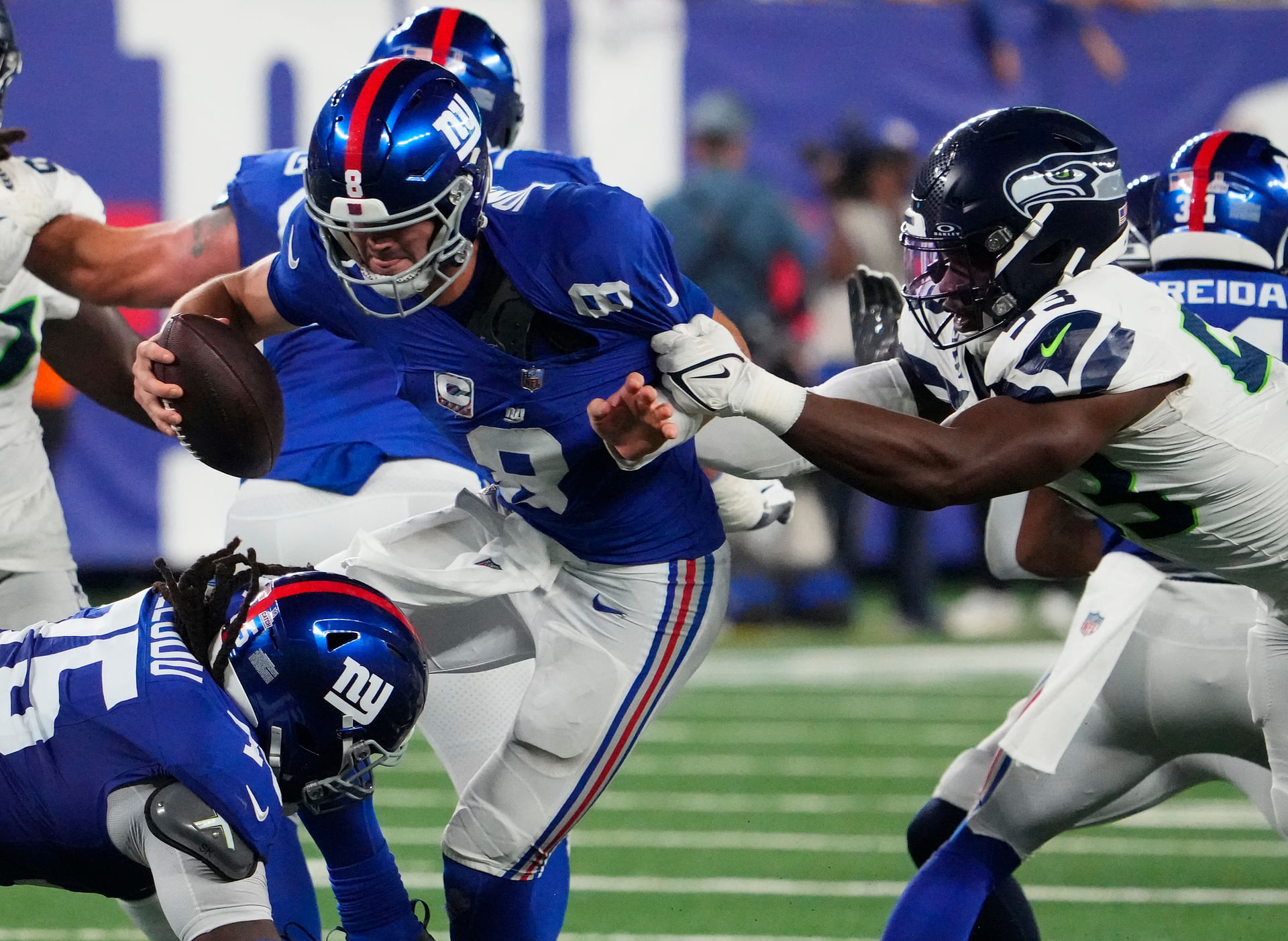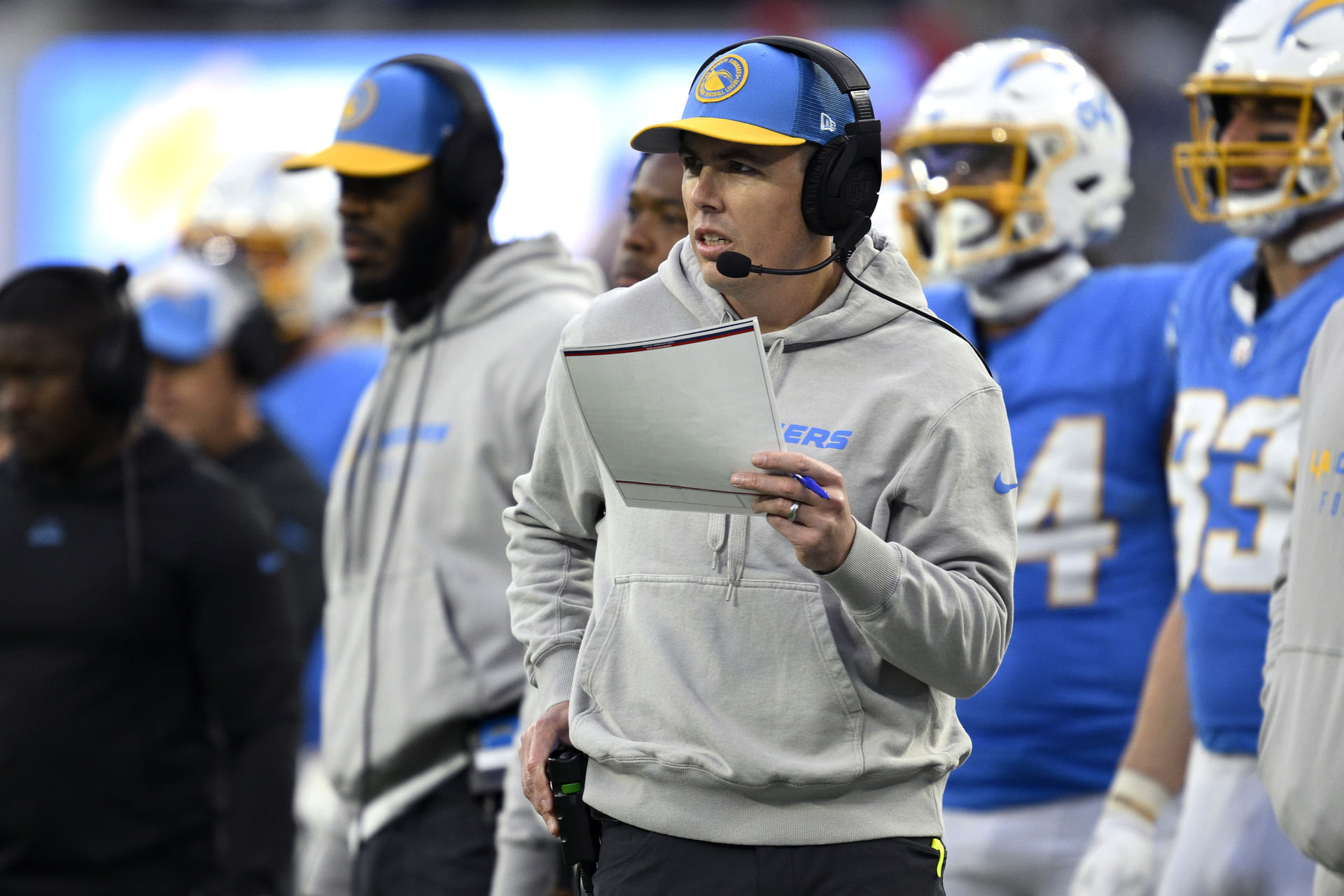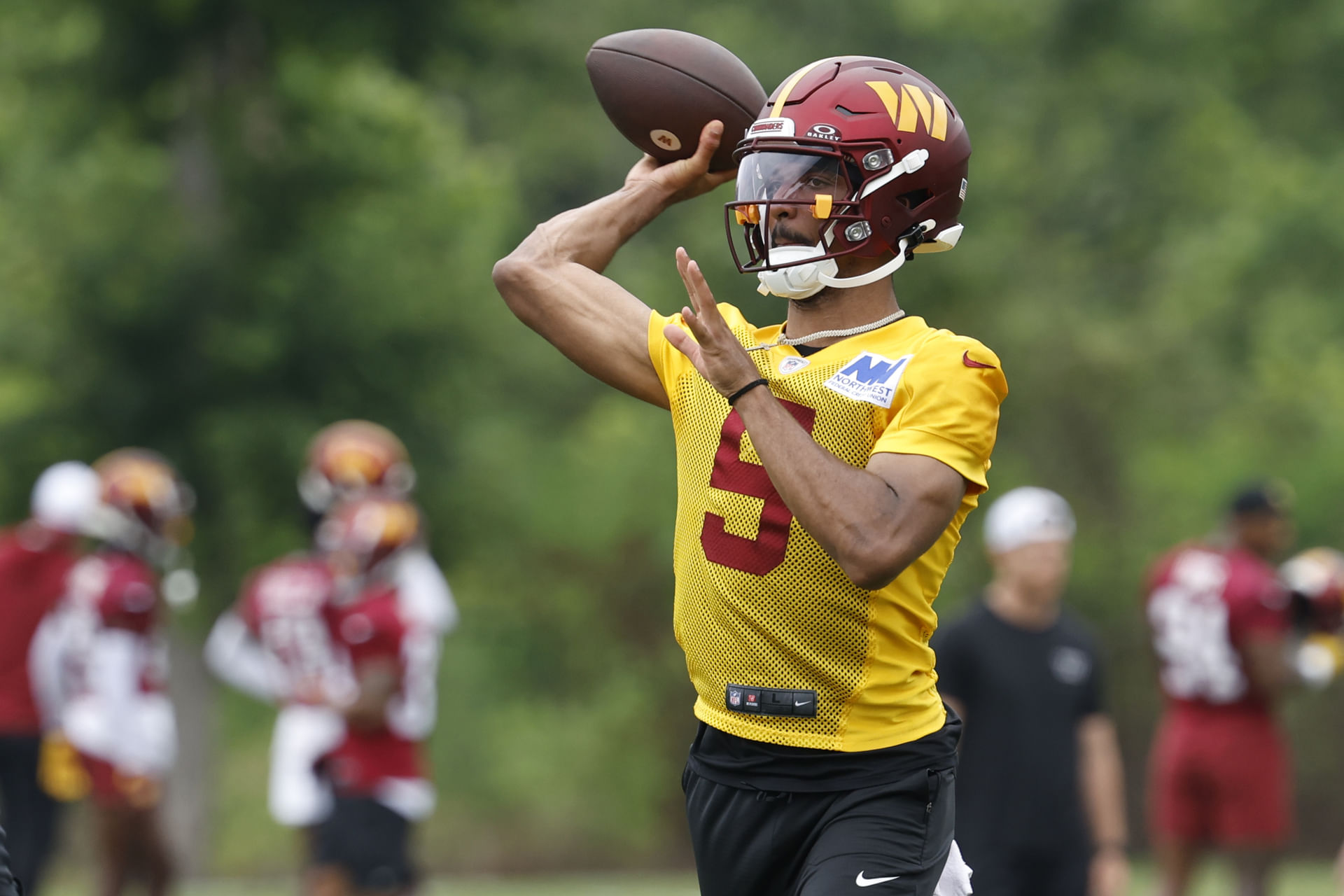
One burning question for each NFC East team ahead of the 2024 season: Cowboys, Giants, Eagles and Commanders in focus
With the 2024 NFL season creeping slowly closer, it felt like a good time to look at the NFC East in more detail. I asked myself “What is the one burning question for each of these franchises heading into this upcoming season?,” and here we are at the NFC East.
One burning question for each NFC East team ahead of the 2024 season
#1, Dallas Cowboys
Is the spine of this defense more solid and do they live in base under DC Mike Zimmer?

Under defensive coordinator Dan Quinn these last three years, the Cowboys were the number one defense in terms of EPA per play, consistently near the top of the league in pressure rate and averaging a league-best 31 takeaways. Yet, when they faced Kyle Shanahan’s 49ers in the playoffs or ran into the Packers in the wild-card, they seemed to be a step behind, particularly struggling to defend the run.
At its best, Dallas during that time was playing with the lead, could pin their ears back getting after the quarterback and create big plays. When their opponents have been able to dictate terms to them and played a balanced brand of offense, they’ve been a far less impactful unit. In fact, no other team actually surrendered a higher rushing success rate last season at 44%.
Diving into their issues this past season specifically, Mazi Smith hasn’t yet come close to turning into the impactful shade nose tackle they invested a first-round pick in. They actually asked him to shed weight and therefore were vulnerable right in the middle of their front.
Recently retired Leighton Vander Esch was the only 240+ pound linebacker that saw the field extensively and in large part because of that, dime basically became their primary personnel set, with safeties at 205-215 pounds having to take on pulling linemen.
The Cowboys asked Mazi to put weight back on, they signed what is at least still a solid run-defending linebacker in Eric Kendricks and drafted another long, physical project at the position in Notre Dame’s Marist Liufau in the third round. More importantly, their whole mentality is about to change with an old-school DC in Mike Zimmer.
He’s had his faults with linebackers getting exposed in coverage by relying on base personnel and we can question how he’ll adapt to the modern NFL passing game after a couple of years as a consultant in college. That said, I’d at least feel good about this team showing more resistance to getting taken advantage of on the ground.
Also read: Most improved position groups across the NFL this offseason
#2, New York Giants
Can this reshuffled offensive line at least be functional?

The Giants are still looking to figure out how to at least not sink their offense by having a rotating cast of characters looking to create openings in the run game and protect the passer.
Since the previous regime drafted quarterback Daniel Jones in 2019, only once was their offensive line ranked top-20 in both run- and pass-blocking grade by Pro Football Focus – and they finished ninth in EPA per play as an offense in 2022, going 9-7-1 as a team and winning a playoff game.
Left tackle Andrew Thomas was a second-team All-Pro that year and has established himself as a top-tier player at the position, when healthy – but he only played just over half of their snaps this past season. While they were hoping top-10 pick Evan Neal could take a similar player development path as Thomas following a rough rookie campaign, his PFF grade sunk even further to below 40.
Neal had worse pressure numbers and a higher rate of penalties, playing even less than the guy on the opposite of the line. As far as the interior goes, rookie John Michael Schmitz struggled to find any consistency – which was his trademark at Minnesota – while they went with journeyman and young, unproven players at guard.
This offseason, they moved on from their previous de facto starters at both those spots, while bringing in free agents Jermaine Eluemunor, Jon Runyan, Aaron Stinnie and Matt Nelson for competition. Eluemunor should push Neal for the starting gig at right tackle, but he did start his career inside.
If he can be a quality starter at either spot and they don’t have a turnstile at one of those, that should determine if this offense can look more like it did in 2022 or be as broken as they were this past year.
#3, Philadelphia Eagles
What will the relationship between Kellen Moore and Jeff Stoutland look like?

Following the departure of now-Colts head coach Shane Steichen as Philadelphia’s offensive coordinator, the Eagles offense struggled to find consistent designs to structure their attack around and put together comprehensive game plans.
They almost purely operated out of shotgun, their run game was very simplistic – built around a league-high rate of just over 50% inside zone – they tipped off their opponents on plays based on formations and connected motions they used and there was no functioning marriage between those two facets.
That seems almost unthinkable when watching Jalen Hurts emerge as an MVP runner-up, with an elite offensive line and group of skill-position players around him the year prior. The guy who touches the ball first on every play, Jason Kelce, is now retired, but the rest of that front-five remains fully intact and Cam Jurgens was hand-picked two years ago as the replacement by the future Hall of Fame center.
Moreover, they stole an All-Pro level running back in Saquon Barkley away from their division rivals, the Giants, without true difference-makers at the position previously. They also moved on from Brian Johnson at offensive coordinator.
What I’m most interested in now is how this unit truly comes together and what the optimal plan might look like with Kellen Moore bringing in new ideas for their dropback passing game. Meanwhile, O-line coach Jeff Stoutland supposedly should be heavily involved in the design of their rushing attack.
In an optimal world, Moore installs route patterns that put defenders in conflict, they not only use motion (at the snap) at a higher but with actual purpose and Hurts has solutions as well as knows where they are when he’s being blitzed (which defenses did at an NFL-high 40.5% rate last year and his numbers plummeted as a result).
The enigma here might be how much more we see them go under center, do they evolve a more varied gun run game or do they find a happy medium with some pistol sets possibly?
#4, Washington Commanders
Do any of these secondary receiving options emerge?

It's all change in Washington. Dan Quinn is getting his second chance to be a head coach and is looking to install some of the principles that made the Cowboys the number one defense in EPA per play over his three-year run in Dallas.
Then there's reigning Heisman Trophy winner Jayden Daniels, who is supposed to bring a two-way dynamism to the quarterback position this fanbase hasn’t seen since the early promise of Robert Griffin III. Lastly, new general manager Adam Peters signed several free agents to help kick-start this rebuild in the mold of what he was part of in San Francisco.
However, in the short run, it may be more telling how offensive coordinator Kliff Kingsbury can set up his rookie quarterback for early success and which of the ancillary pieces can provide consistent production. Their efficiency on the ground and what their new play-caller does in terms of creating favorable looks in that regard is the part I’m actually far less worried about.
However, while there was never any real discussion among NFL teams I have to believe about who should be the number one pick, a lot of the negatives on the scouting report of Caleb Williams are tied to questionable structures in the passing game – along with poor protection and little separation by their receivers.
We have yet to see if anybody can emerge at left tackle in the nation’s capital, but even more glaring is how reliant they could be on Terry McLaurin as their primary target. Jahan Dotson didn’t have the second-year breakout many projected, as he was less efficient and found the end zone about half as many times in five extra games, while I questioned how they actually used him.
The two legitimate additions they made were tight-end Zach Ertz, after being limited to seven games with a quadriceps injury last season, and third-round pick Luke McCaffrey, who only transitioned from quarterback to wide receiver two years ago. So unless a couple of these guys step up significantly, this is far from what Jayden had at LSU.